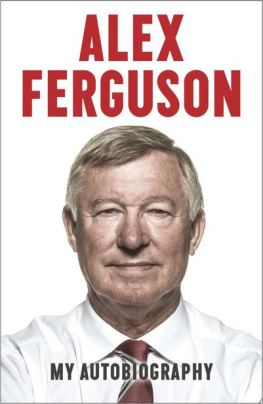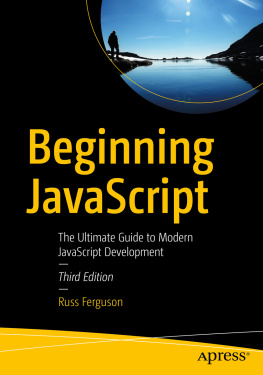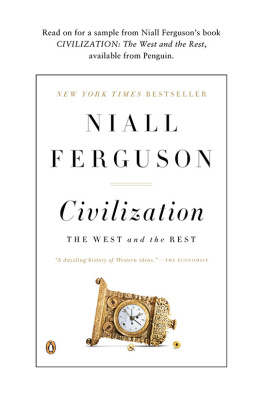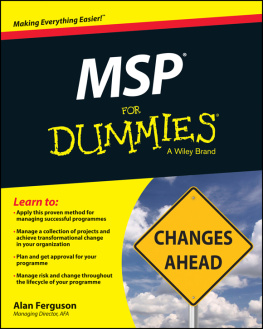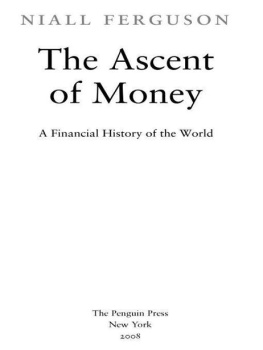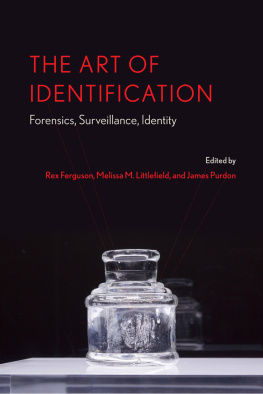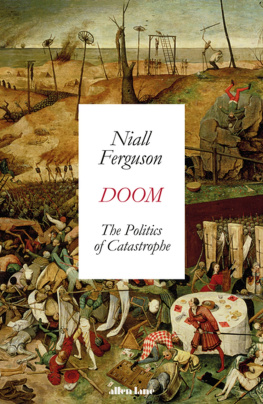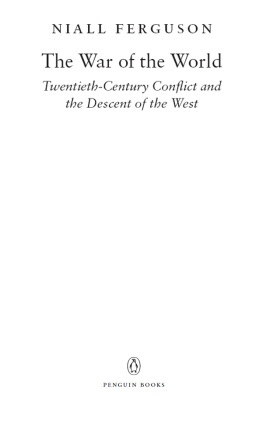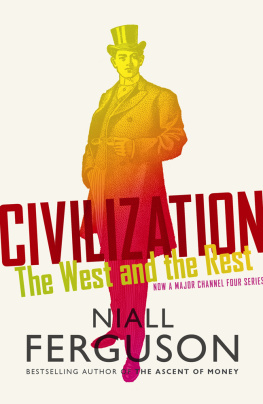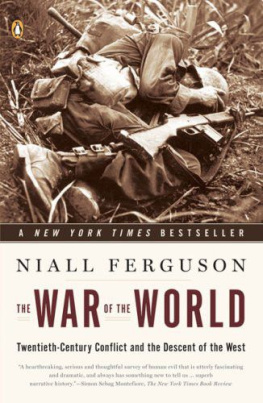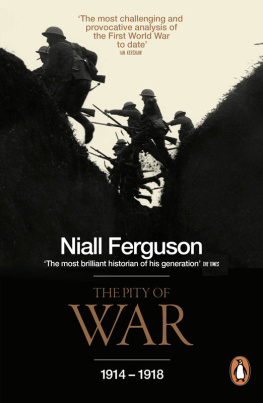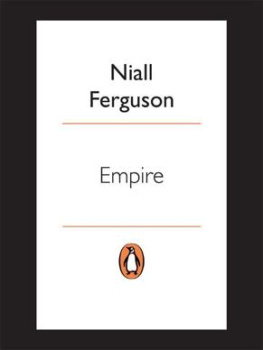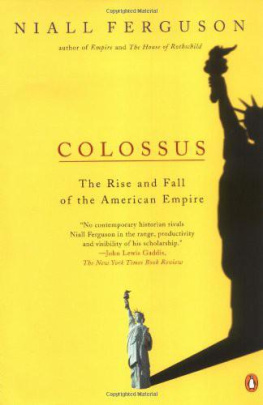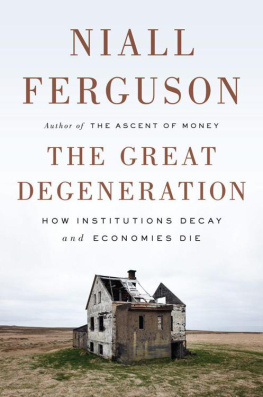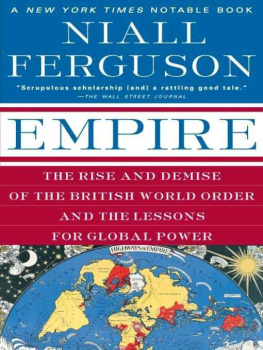The Pity of War
BY THE SAME AUTHOR
Paper and Iron: Hamburg Business and German Politics in the Era of Inflation, 18971927
Virtual History: Alternatives and Counterfactuals
The House of Rothschild: Moneys Prophets, 17981848


This book was first published in Great Britain
in 1998 by Allen Lane, The Penguin Press, The Penguin Group
Copyright 1999 by Niall Ferguson.
Repressions of War Experience copyright Siegfried Sassoon,
\reproduced by permission of George Sassoon.
Published by Basic Books,
A Member of the Perseus Books Group
All rights reserved. Printed in the United States of America. No part of this book may be reproduced in any manner whatsoever without written permission except in the case of brief quotations embodied in critical articles and reviews. For information address Basic Books, 387 Park Avenue South, New York, NY 10016-8810.
A CIP catalog record for this book is available from the Library of Congress.
ISBN-13: 978-0-78672529-8 (pbk)
DCRW 20 19 18 17 16 15 14 13 12
Contents
First plate section
Second plate section
Many historians far more expert than I on the subject of the First World War have generously given encouragement and advice during the research and writing of this book. I would like to thank especially Adrian Gregory and David Stevenson, who read the first draft in its entirety and saved me from many errors. Brian Bond, John Keegan, Avner Offer, Hartmut Pogge von Strandmann, Gary Sheffield and Peter Simkins also kindly helped. Among the many others to whom I have incurred war debts over the years, I should like to thank Richard Bessel, Gerry Feldman, Stig Frster, Jonathan Steinberg, Norman Stone and Jay Winter. Needless to say, none of the above bear responsibility for the arguments and opinions advanced here.
This book could not have been written without the invaluable research assistance I have received from Nick Berry, Glen OHara and Thomas Weber. Daniel Fattal, John Jungclaussen, Jon Thompson and Andrew Vereker also did sterling work.
Timothy Prus and Barbara Adams of the Archive of Modern Conflict, London, provided indispensable assistance with the photographs. I would also like to thank Jillian Timmis for introducing me to the Finch diaries, and the Finch family for permission to quote from them.
Over the period of this books long gestation, I have received generous financial assistance from both the Oxford University History Faculty and Jesus College, Oxford. I am deeply grateful to both. I would also like to thank Vivien Bowyer for her help in preparing the tables and charts.
I cannot praise too highly my publishers, Penguin Press. Those who have contributed to turning my rough manuscript into a book are too numerous to name; but I hope the others will forgive me if I thank my editor Simon Winder, who started the ball rolling.
Finally, I would like to thank my family for tolerating my unreasonable working hours and irascibility.
The book is dedicated to the memory of my grandfathers, who fought for their country in the two world wars.
The photographs in this book are a mixture of the official and the unofficial. The latter are perhaps more interesting; they are certainly less familiar; indeed, most of the photographs taken by ordinary soldiers are reproduced here for the first time.
George Mosse has argued that the photographs that soldiers took themselves for their families were always realistic; whereas the official photographs tended to perpetuate the Myth of the War Experience (Mosse, Fallen Soldiers, pp. 150f.). To judge by these photographs, this is not quite true. Certainly, the accredited photographers whose work was published during the war tended to avoid pictures of their own sides dead; but not invariably. Indeed, it is surprising how much of the horror of war can be seen in some official photography. More importantly, the soldiers private albums are not necessarily realistic if by that one means unflinching in depicting the horrors of the trenches.
The archetype of a realistic war photographer was John Heartfield. The two pictures which he captioned This is how a heros death really looks are harrowing images of dead soldiers, broken, disfigured, mud-covered. But Heartfield was an exceptionally politicized soldier. He was, in fact, German. Christened Helmut Herzfeld, he changed his name to John Heartfield in 1915 as a protest against wartime Anglophobia. He later recalled how he consciously strove to challenge the official photography while he was serving in the trenches:
Photos of the war were being used to support the policy to hold out when the war had long since been settled on the Marne and the German army had already been beaten... I was a soldier from very early on. Then we pasted, I pasted and quickly cut out a photo and then put one under another. Of course, that produced another counterpoint, a contradiction that expressed something different. (Pachnicke and Honnef, John Heartfield, p. 14)
And thus was born Weimar photomontage. However, the majority of soldiers who took cameras to the Front (and it should be remembered that British soldiers were not allowed to) were less politicized. Few strove for realism in Heartfields sense of a counterpoint to propaganda. Their photos tell us as much about the way they wanted to see the war and the war to be seen by others as the official photographs tell us about the objectives of government propaganda.
All pictures are courtesy of the Archive of Military Conflict, London.
For
J G F
and
T G H
For by my glee might many men have laughed,
And of my weeping something had been left,
Which must die now. I mean the truth untold,
The pity of war, the pity war distilled.
Wilfred Owen,
Strange Meeting
The Sinister Spirit sneered: It had to be!
And again the Spirit of Pity whispered, Why?
Thomas Hardy,
And There Was a Great Calm
J G F
John Gilmour Ferguson had just turned sixteen when the First World War
My grandfather was one of the lucky 73.6 per cent. He was shot through the shoulder by a sniper whose bullet would certainly have killed him if it had struck a few inches lower. He survived a gas attack, though his lungs suffered permanent damage. His most vivid recollection of the waror at least the one he related to his sonwas of a German attack. As the enemy troops ran towards his trench, he and his comrades fixed bayonets and prepared for the order to go over the top. At the last moment, however, the command was given to the Cameronians further down the line. So heavy were the casualties in the ensuing engagement that he felt sure he would have died if the order had been given to the Seaforths.
Next page

